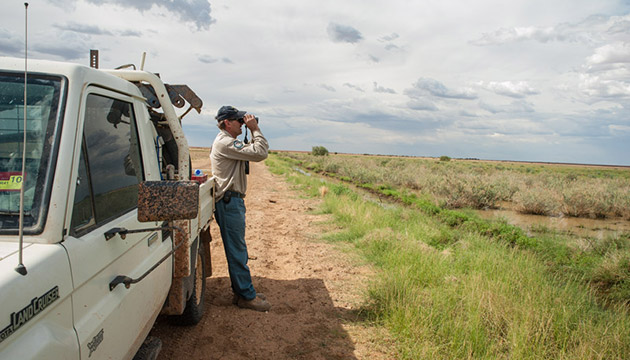Many national parks in western Queensland are managed by isolated, live-in husband-and-wife ranger teams, ready to turn their hands to whatever needs doing.
Story By Peter Scott
The Diamantina National Park homestead sits on an island, surrounded by an inland sea of water that has made its way down the channels of the Diamantina River system. Head ranger Chris Mitchell and assistant ranger Flynn Majer are cut off from the outside world, with roads in every direction inundated. The river is now 40 kilometres wide. Chris’s wife and fellow ranger Fiona Leverington is more than 1000km away, with no hope of returning until the floodwaters have receded – probably weeks.
Just a month previously, the temperature on the verandah hovered around 51 degrees Celsius. With no rain for months, the park was parched, with barely a living thing moving during the day, save for a few kangaroos shuffling with the moving shade of the mulga trees on the Mitchell grass plains.
The job of a national park ranger is often thought of somewhat romantically, working with wildlife and nature in rainforests and pristine environments. The reality is quite different, especially in the outback. In the national parks of western Queensland, rangers are often isolated and have to be self-reliant. These are men and women comfortable with their environment, comfortable in their own company, often hundreds of kilometres away from a small town, let alone a city.
This Story is from Issue #98
Outback Magazine: Dec/Jan 2015










